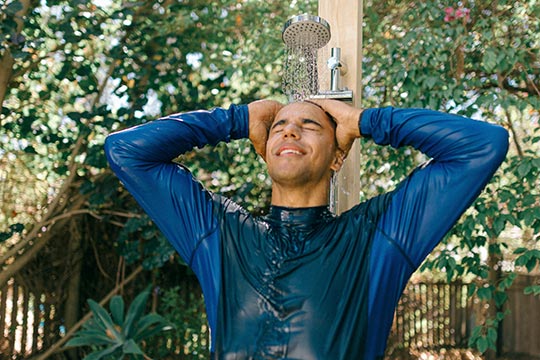Over the past century, Western Australia has experienced significant changes in its water sources. Population growth, economic growth and climate change have dramatically impacted our water supply. Living in the world’s driest inhabited continent, it’s crucial to understand these changes and adapt by creating drinking water sources that don’t rely on rainfall. We must secure our WA lifestyle for future generations.
Why can't we just build more dams?

In the past, rain filled our dams and met our water needs. Western Australia looked quite different in the 1920s. We treated rainwater from our full dams and delivered it to homes and businesses around Perth. However, climate change, a growing city and economy and the accompanying increase in population has driven water demand significantly, factors we haven't highlighted enough.
In the 1960s, dams still supplied 88% of Perth’s water, with the remaining 12% coming from groundwater sources. The State Government introduced water restrictions related to bore use and new water use tariffs in the late 1970s to conserve water. By the 1980s, warmer temperatures and less rainfall shifted our water sources. We then scaled back water from our dams to 65% of our supply and relied more on groundwater.
As time goes by WA continues to see less streamflow into dams and recharge into our aquifers. This means less water for our growing city and population. So, we have reduced our reliance on dam water and we need to look at other options like desalination, groundwater replenishment and recycled water. These methods are not easy, but they are crucial for our future. In 2006, we built Australia’s first desalination plant. As part of water efficiency efforts, the Winter Sprinkler Switch-off has been introduced in 2010. This was followed by the construction of a second desalination plant in 2011. In 2017, we were the first water utility in Australia and among the first internationally to replenish our groundwater supplies. Currently, in 2024, we are building our third desalination plant. We needed a secure, rainfall-independent water source for Perth and beyond.
However, dams still play a crucial role as storage reservoirs. We store desalinated water in dams during periods of low demand, so it is available when we need it. This helps ensure a stable water supply even during dry periods.
Our climate has changed, so have we
Today, we still get some drinking water from streamflow into our dams, but we can no longer rely on the same amount of rainfall we used to receive. That's why we depend on other sources of water to supply Perth.
Desalinated seawater made up around 35% of Perth's water, groundwater around 36%, dams just 26% and groundwater replenishment 3%. These proportions vary every year, depending on rainfall, dam storage, and other factors. We treat some of our recycled wastewater to top up our underground aquifers. You can see just how much our water sources have changed in Perth using our water supply tool.
What's planned for the future?
To ensure the future of water in WA, we are keeping our drinking water options open by creating and investing in new water solutions. One example is groundwater replenishment, where we treat wastewater to meet drinking water standards and then recharge it into our underground aquifers. We have planned ahead with several viable water source options that are don’t rely on rainfall, helping to secure our water supply even as climate change affects our usual sources.
What can I do to make a difference?
Knowing where our water comes from and the challenges we face is the first step to making a difference. You can help create a sustainable future by being mindful of your water use. Small changes in your daily habits make a big difference. Fix leaks, use waterwise appliances and aim for 4-minute showers. Also, think about creating a waterwise garden.
Together, we can ensure that Western Australia continues to thrive, even in the face of climate change. Let’s work towards a sustainable future for our water supply and our unique WA lifestyle.

Be waterwise
In the face of climate change, everyone has a part to play in protecting and changing how we use water.
From discovering tips on how to save water in your home or business, to following your watering day schedule, it's important we think climate change and be waterwise.
Be waterwise

